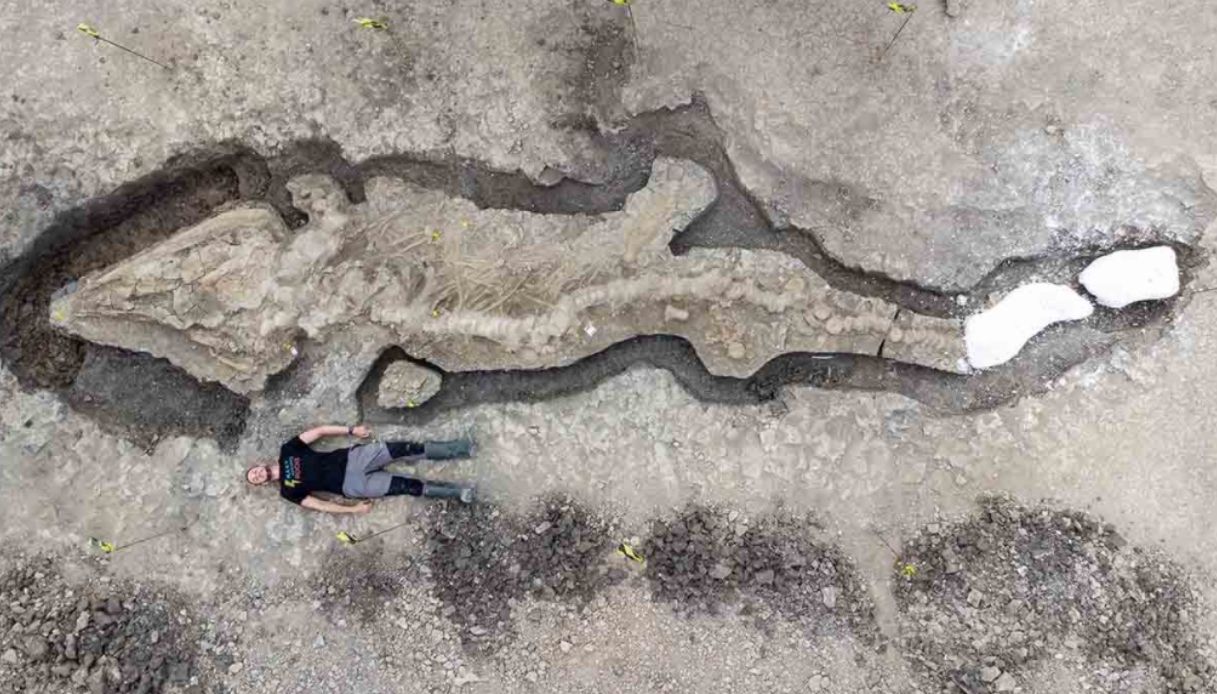The remains of a sea dragon that lived in the time of the dinosaurs discovered – RB
Hello, Welcome to the RockedBuzz News site! I will present you all the details of Discovered the remains of a sea dragon that lived in the time of the dinosaurs – RB here.
Discovered the remains of a sea dragon from the time of dinosaurs – RB
The remains of a sea dragon that lived in the time of the dinosaurs have been discovered – RB We have explained the details of the news, step by step, below. The remains of a sea dragon that lived in the time of the dinosaurs discovered – RB Keep reading our news. Here are all the details on the subject.
The remains of a sea dragon that lived in the time of the dinosaurs discovered – RB
SCIENCE
Dinosaurs continue to fascinate, especially after the discovery of the remains of an extinct sea dragon in the late Cretaceous period
Not only Loch Ness: it seems that the British people have a real passion for sea monsters . In addition to the legendary one that has been plowing the Scottish lake of the same name for decades, there is another creature in the country that deserves attention. We are talking about the sea dragon discovered in the UK in recent days by some local paleontologists and scientists. In short, the fossil of a colossus that lived in the same period as the dinosaurs, in the specific about 180 millions of years ago. Obviously it is not a real dragon like those admired in the “Throne of Swords”, but the suggestion of renaming it in this way was too strong.
The discovery of the sea dragon has been called “unprecedented.” The fossil in question allowed to literally revive an animal long 10 meters who used to swim in the seas a long time ago . Among other things, they are also the largest and most complete remains of this genus. British paleontology is rejoicing over the novelty that will always be associated with the nation of Queen Elizabeth: the fossil was found in the nature reserve of Rutland Water , in the East Midlans, not many kilometers from the city of Leicester. is nothing short of fascinating.
A great resemblance to dolphins
The sea dragon was nothing more than a large ichthyosaur, better known by a long and complicated name, namely Temnodontosaurus trigonodon . It is not the first time that remains of the same species have been found, but the length of the latest fossil has broken all previous records. The marine reptiles in question began their evolution 250 millions of years ago, gradually disappearing 160 millions of years later, to be precise in the late Cretaceous . They looked no different from the dolphins we are used to today and we are even learning the language, even if you don’t have to imagine the same sweetness and meekness, since they were in effect a giant dinosaur.
A random find
The credit for the discovery of the sea dragon is all due to Joe Davis , leader of an archaeological conservation group on behalf of the Leicestershire and Rutland Wildlife Trust. He managed to enter the history of paleontology, not just British, almost by accident. While walking along a dried up lagoon, in fact, he noticed some protruding pipes and went to look around. The surprise was around the corner, as the tubes were hiding the vertebrae of the creature that lived in a very distant past. As an expert, Davis quickly realized he was dealing with an exceptional fossil and is now enjoying the well-deserved fame.
Great Britain has already decided to dedicate a television series to the discovery of the sea dragon: for further information on the largest ichthyosaur ever will have to wait some time, given that very accurate scientific articles are expected to be published over the next few months. It will be a unique opportunity to learn more about a mysterious species like many other dinosaurs , maybe they loved to live in herd and were social as emerged in recent research: the first illustrations of the bones in question date back to 1699, now the times are definitely more ripe for a definitive study.
Simone Ricci




